California's young 'water buffalo' JB Hamby spurs united Colorado River rescue, for now
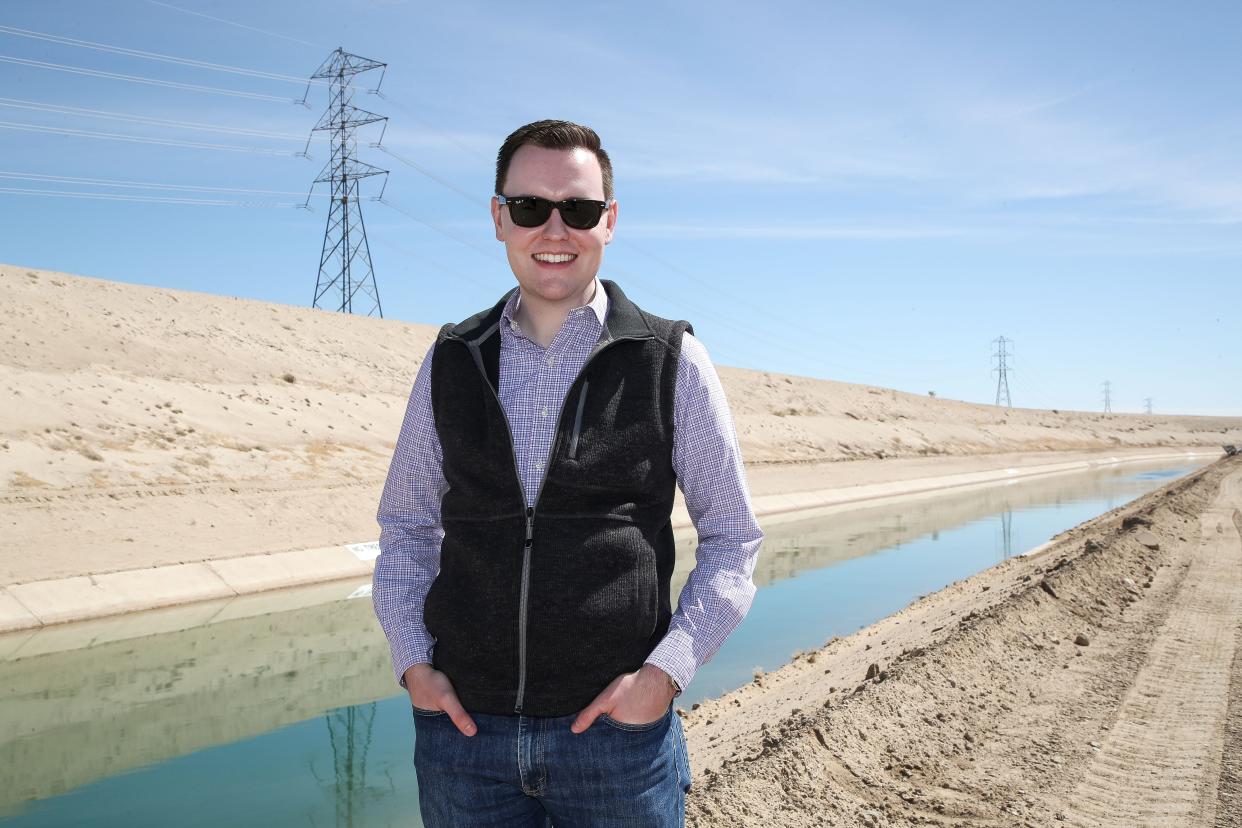
- Oops!Something went wrong.Please try again later.
It was a rough debut. JB Hamby, 26 years old, had rocketed to the innermost circle of state and federal officials charged with saving the Colorado River from collapse. In mid-January, he was elected to chair California's river board, representing Imperial Irrigation District, by far the biggest recipient of the overused river’s supply.
Federal officials had bluntly threatened to impose mandatory cuts across the region if huge voluntary reductions weren't made.
But 12 days later, after contentious closed-door talks, he watched in dismay as media outlets across the U.S. published stories about six states releasing a joint plan to save the river, with only his state, California, refusing to sign on.
It was a baptism by near drowning for the youngest “water buffalo,” as negotiators of Colorado River agreements have historically called themselves. But Hamby didn’t respond angrily or publicly. Instead he wrote individual thank-you notes to top negotiators in every other state, and asked if he could meet with each to discuss mutual solutions.
“My mother always made us sit down and write thank you notes immediately,” Hamby said when asked about the sequence of events.
It worked.
Negotiators who'd privately lambasted Hamby to reporters now texted him for lunch and coffee, and momentum built.
Still, the 7 states faced an enormous challenge. After 23 years of drought amped up by climate change, the over-used river's massive reservoirs had plunged to 25% of capacity. It fell so low by the summer of 2022, long-buried bodies dumped in Lake Mead were exposed to daylight. The river was at risk of hitting "dead pool," unable to flow downstream to 35 million people's homes and 5 million acres of farmland, or that its massive hydropower turbines providing power to 4 million people might grind to a halt.
U.S. Bureau of Reclamation Commissioner Camille Calimlim Touton, also new to her post, warned Congress that June that up to 4 million acre feet needed to be conserved by 2023. That's about as much as the state of California is allowed to take annually for 19 million people and farm fields.
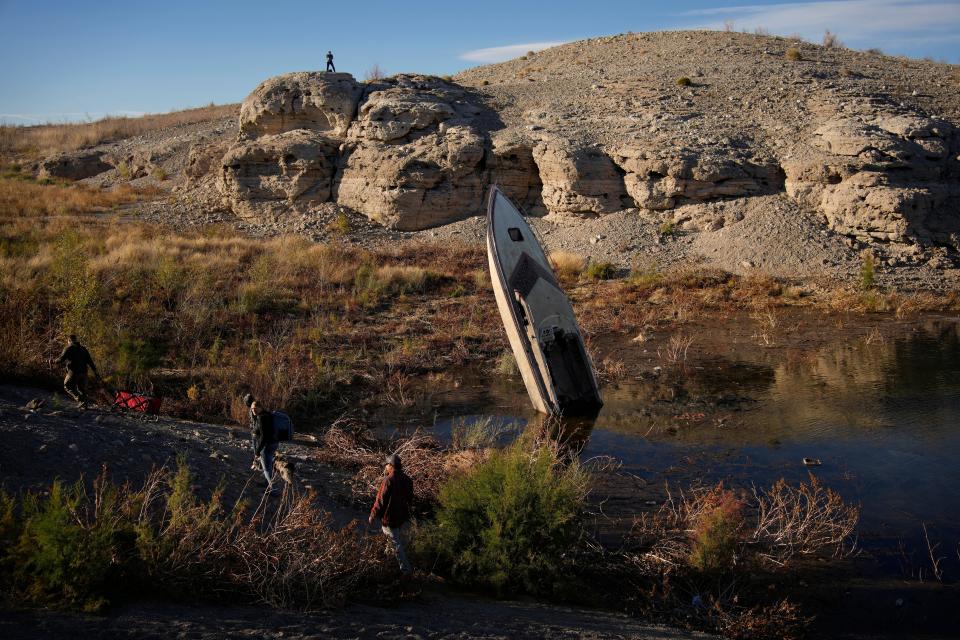
"The system was near empty, and we were heading to a point where we physically couldn't pass water to serve millions of people," Hamby recalled on Friday. "We were on the precipice of disaster."
But Hamby's conciliatory gesture in January, and more importantly, his willingness to talk rather than rant, paid off. By May, Arizona, Nevada and California had the framework of a deal in place to voluntarily absorb substantial cuts in supply through 2026, and Utah, Wyoming, New Mexico and Colorado had signaled their approval.
The Biden Administration this week announced it was moving forward with public comment and final environmental review on the "historic consensus based proposal" as the only "proposed action alternative," shelving mandatory cuts and the earlier dueling plans. Known as the Lower Basin Plan, Hamby and representatives from Arizona and Nevada collectively have committed to not use up to 3 million acre feet of river water over the next three years, in exchange for hefty federal payments, to guarantee it will stay afloat through 2026, when a new long-term agreement must be in place.
An acre foot is enough to supply about three households for a year, so that's enough for 3 million families for three years. The three states already saved about a million acre feet collectively this year, thanks to heavy snowpack and rainfall upstream coupled with aggressive conservation programs.
"What we experienced this week was Reclamation essentially endorsing our approach," Hamby said on Friday.
It's a stunning contrast to the acrimonious clashes nine months ago, when many pundits said the river might actually run dry before any agreements were inked.
"Those were dark times," said Hamby. "It was a very bad start, but we pushed through, and in a matter of a few months we managed to go from a very, very contentious period to this. ... Now we need to work on durable solutions for after 2026."
Hamby didn’t do it alone. A core group of senior Arizona, Nevada and federal negotiators played big roles, as did an extremely wet winter. But for now, Hamby, in unique fashion, has turned the tide from California fighting the rest of the angry West on crucial water supply and burnished his image, too.
"His ability to represent not just the Imperial Valley, but California's interests toward a sustainable river, is an important asset as we work to address historic drought accelerated by climate change across the West," Reclamation Commissioner Touton said in an email on Wednesday.
"J.B. has exhibited a real progressive, collaborative spirit in our discussions. He is a very measured, calm person who is clearly very intelligent," Tom Buschatzke, director of the Arizona Department of Water Resources, said in an email.
"In my opinion, his role with the Imperial Irrigation District and his history in the Imperial Valley gives him a great deal of credibility with California water users ... as its principal representative on Colorado River matters," Buschatzke, also part of the core group that hammered out the compromise plan, said.
Hamby, who was elected to the IID board in 2020, is positioned well. The district is entitled to by far the largest share of California's river allocation, and though lesser known to outsiders than urban districts, has long played a sometimes disruptive role in water supply talks as it seeks to keep that supply.
But Hamby's old-fashioned manners combined with a self-expressed desire to stand up to wrongful authority, sprinkled occasionally with a "holier-than-thou” attitude, have brought a new approach to the table. Supporters and occasional critics alike say he has grown into the job, ditching colorfully direct but sometimes sophomoric jibes for more diplomatic parlance.
Hyper fast track: From the California desert to D.C.
So what propels someone who graduated from college just four years ago, and who was a bored Congressional intern just six years ago, to not one but two of the most powerful and toughest jobs in the West: representing both California and the Imperial Irrigation District on the Colorado River?
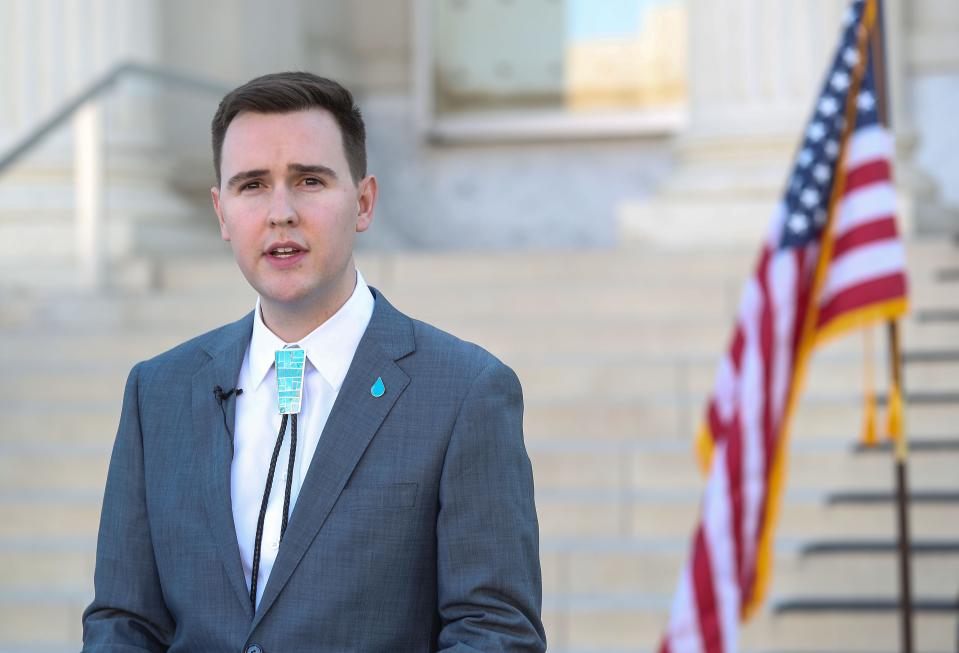
A clean-cut policy wonk who drives a 2013 Prius with a rebuilt engine, Hamby, now 27, lives in a modest “bachelor pad” in El Centro, the county seat of this agricultural powerhouse in the California desert along the Mexico border. He keeps "The Art of War" and Greek and Roman classics on a bookshelf, though he hasn't read them all.
He admits, after hours of discussions over several months, that it’s his childhood in the blazing hot Imperial Valley, specifically as the son, grandson and great-grandson of farmers who’ve tried and often failed in their business enterprises, that fuels his polite but relentless desire to succeed.
The county, 200 miles from Los Angeles in California's extreme southeastern end, is a place of stark contrasts, where wealthy farmers who receive the bulk of its river allocation co-exist with often poor, mostly nonwhite residents. High unemployment and poverty rates dog many of its 180,000 residents.
Even successful growers can go bust if they become overextended with debt or if a new bug attacks a crop. Hamby did not grow up poor, but his father's side of the family has endured repeated busts.
“For multiple generations … there's been repeated struggle, and dreams to be built up and dashed and broken and try again, one generation after the next,” Hamby said.
His great-grandfather arrived in the agricultural valley during the Great Depression, having hitched a ride “with $10 in his pocket on the back of a freight train” from Big Spring, Texas. He dug ditches and became a local beekeeper, but struggled with pesticides and other challenges to his apiaries.

Hamby hoped to attend a big-name college back East, but it was Stanford University that saw his promise. Someone from the admissions office also jotted on his application that he came from “one of those ZIP codes,” an apparent reference to Brawley's 92227 postal code and the small city's depressed areas. His parents paid off their mortgage on a comfortable home under large, shady sycamore trees in the late 2000s. They still live there. He recalls fondly going to middle school "in the country" outside of town, where he raised rare breed hens for 4-H.
But it wasn't always easy.
His grandparents on his father’s side suffered a string of reversals to their bee colonies and farm fields, and his father was forced to work overseas for long stretches when Hamby was a child, after supplier contracts for his successful produce fields suddenly dried up.
Hamby talks about being airlifted to the hospital on Sept. 11, 2001, when he was 5, with the worst asthma attack of his life. He said his parents still recall with sadness his father ringing from China, shocked by the collapse of the Twin Towers in New York and unable to be with his son. Mark Hamby is now mainly in the seed business. JB's mother is a longtime Imperial County employee in the environmental health department, first as a health inspector and now handling water quality issues.
Her New Mexico roots also gave Hamby an affinity for adorning his preppy garb with turquoise bolo ties and silver Native American belt buckles on special occasions. He stands out in his home county, where short-sleeved plaid shirts and work boots are the norm.
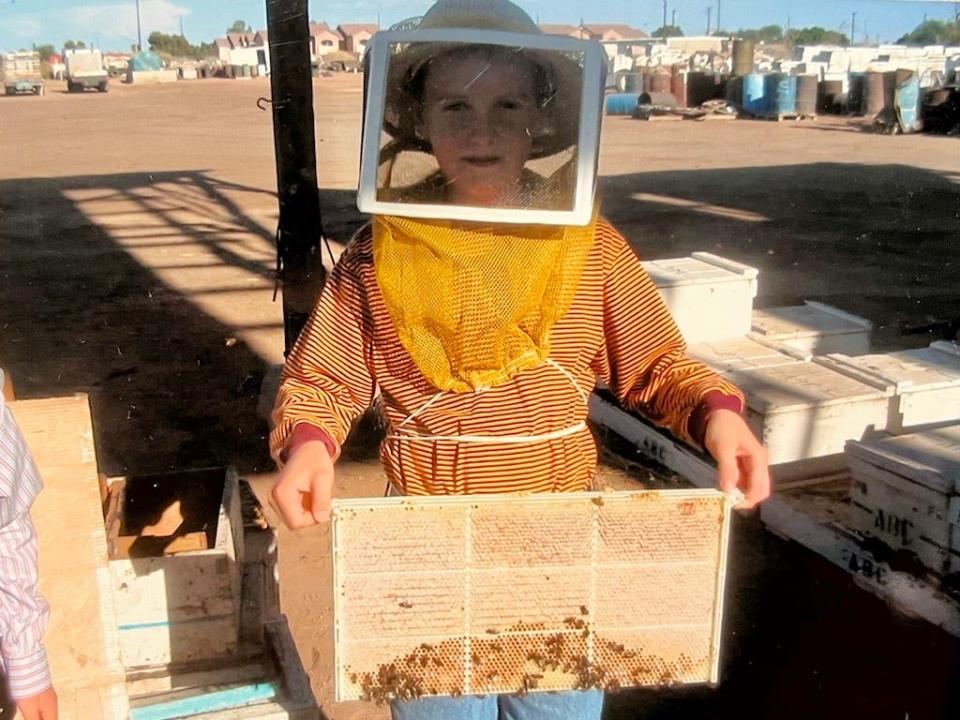
It’s easy to forget how young Hamby is when he’s explaining complicated water laws or a potential new policy. He graduated from Stanford with a B.A. in history and classics in 2019. He skipped the late-night parties, he says of his college years, instead spending hours reading original water treaties and other yellowed documents in the campus library.
As a a high school junior, he was a Capitol page for Sen. Barbara Boxer, a California Democrat. Six years ago, he was an intern for then-U.S. Sen. Ben Sasse, a Nebraska Republican.
“Didn’t love that,” he said of the internship. “I wanted to be able to go out and do things and solve problems, not sit at a desk and do clerical work.”
On that front he has achieved, now traveling across the Southwest and to Washington, D.C. and back, talking regularly with Touton and other top officials about proposals for multi-state solutions to keep the overallocated Colorado River functional as climate change driven mega-droughts take hold.
In November, he successfully advocated for $250 million in federal funding to restore the also rapidly drying Salton Sea, which loses elevation every time river supply to the Imperial Valley is cut. The funds were linked to IID agreeing to more cuts to supply. Hamby, elected to the district board in 2020, joined with two outgoing board members, with whom he'd often clashed, to narrowly approve the deal over the loud objections of local farmers and activists.
At the federal and state level, though, he won praise from some powerful allies.
"Securing $250 million for the Salton Sea, which allowed a path forward for the State of California to commit to record voluntary conservation, could not have been done without JB's partnership and leadership," Touton said.
'Listen and learn:' Hamby's swift ascent amid a 'crucible' of aggressive questioning
Hamby doesn't shy away from taking a forceful stand. In 2014, Hamby gave a defiant speech to his high school graduating class that school administrators made him rewrite multiple times, because they said he couldn't focus so much on religious verses in a public school speech. “The greatest bestseller of all time,” he said of the Bible in the speech.
But it was as a sophomore on a high school “mock trial” team that he got his first real taste of facing down older challengers and winning the prize. His team from Brawley High School beat archrival El Centro and headed to the state championships in Sacramento. An event judge named Jake Rambo grilled the 16-year old relentlessly for over an hour, repeatedly interrupting his presentation on why someone who’d shot an intruder should be prosecuted. Then he awarded Hamby first prize for pretrial presentation and announced he’d triumphed in the “crucible” of aggressive questioning.
In 2021, Hamby did it again, on a much larger stage.
The announcement of his meteoric rise to become California’s top negotiator for Colorado River water features a happy photo of him shaking hands with his smiling new vice chairman, a veteran San Diego politician named Jim Madaffer. But it took multiple ballots and behind-the-scenes maneuvering before the young unknown from the desert beat out the older man, who was also angling for the top spot.
“Madaffer, the representative from San Diego Water Authority, wanted that job and it took several ballotings before we finally broke the logjam,” said Bart Fisher, a Blythe farmer with the Palo Verde Irrigation District. A California Colorado River board chairman himself for 14 years, Fisher didn’t want an urban water contractor to take control of the largest state in the West's negotiations over the fast-dwindling water.
He didn’t see Hamby’s age or his relative lack of experience as reflecting the full picture. “He is a voracious reader and a hard worker,” Fisher said, echoing the sentiment of others.
Still, getting the post required finesse, and Hamby provided it. The spot had opened abruptly. Vegetable farmer Peter Nelson of the Coachella Valley Water District, burned out by the increasing demands of chairing the board atop work duties, announced in late 2022 that he would not seek re-election in January. He also saw Hamby as the obvious heir.
Metropolitan Water District: 'LA and all those lawns'
But a California heavyweight saw an opportunity to wrest control from the desert farm districts who had ruled the board for decades. Adan Ortega, the new chairman of the Metropolitan Water District of Southern California, didn't have time to tackle the state post himself. Eager to mend fences with San Diego after the two agencies had battled for years, he saw Madaffer as a perfect choice.
MWD, which provides water to districts across greater Los Angeles and Southern California, is despised by Imperial farmers and IID officials. As they see it, it was "Met" that first stole part of their water in the 1980s, via a transfer that still costs them about 105,000 acre feet a year. The urban behemoth did it again in 2018, out-maneuvering the rural district on a drought contingency plan. Farmers all but spit when they talk about the fact that any water they don’t use to grow crops “goes straight to Met … to LA and all those lawns” in the words of Larry Cox of DonBee Farms in Brawley.
To prevail over IID, Ortega just needed MWD’s own representative on the river board, Glenn Peterson, to vote for Madaffer.
But in his haste to sweep out MWD’s old guard, Ortega had misstepped. He’d already told Peterson, who’d served for decades and won acclaim for convincing contractors to add fluoride to their supply, that he would be replacing him. Peterson didn't have much to lose.
He also had studied to be a Jesuit priest for nine years before becoming a real estate broker and regional water expert, and had sized up both men. He saw Madaffer as “manipulative” and thought he was overly focused on San Diego, “ not the region.”
As for Hamby, he saw him as a “press hound” too eager for news coverage.
Hamby had assiduously cultivated a relationship with Peterson, choosing to sit with him rather than rural delegates at the board's monthly meetings, which were then held at a dilapidated hotel near Ontario Airport, 40 miles east of Los Angeles. Peterson liked him and admired his work ethic, but he was also troubled by what seemed like at times immature behavior. After reading a Desert Sun story in which Hamby used a Monty Python comedy skit to deride a plan to recover part of the Salton Sea, and seeing him publicly discuss potential cuts to California river supply with a reporter, he called him.
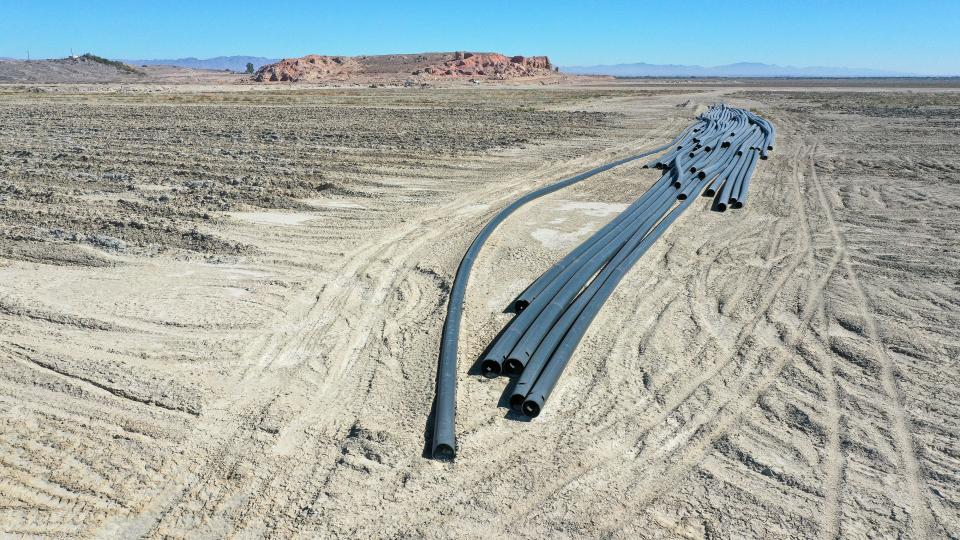
“I think he's a wonderful kid. And he's really smart, and for his age, he is extremely mature. I mean, this guy probably sat at the big people’s table when he was a teenager,” Peterson said. “But I had concerns about his negotiating in the press and about some other issues, and I talked to him about it.”
Peterson told Hamby that he needed to mature, and to stop conducting business via the media.
“And he agreed, he said those are things he's going to work on, and he's been perfect on them all,” Peterson said. “I feel he's done a wonderful job at that.”
Asked about the conversation, Hamby told The Desert Sun, “When someone tells you something like that, you can either get upset, or you can listen and learn.”
The first vote at the river board election was 4-2 for Hamby. Peterson defied Ortega to vote for him, spurning San Diego’s Madaffer. But five votes were needed to win a plurality of the eight member board. Another vote was called. No one budged. Hamby made his move. He asked if the vote for vice chairman could be held first. Nelson called a recess “and everyone broke into feverish small groups to talk,” Hamby recalled.
There was another factor at play besides personalities. San Diego, unlike MWD and IID, has no contract with the U.S. Bureau of Reclamation for Colorado River water. They long ago ceded their rights to Metropolitan.
Outgoing MWD general manager Jeffrey Kightlinger put it bluntly. “At the end of the day, who really runs the Colorado River ship in California? It’s really the two big agencies, Metropolitan and IID. IID controls 75% of the Colorado River water in California, and Metropolitan provides the water for 19 million people. … So the idea that you're gonna say, ‘well, let's put San Diego in charge,’ well, they're a miniscule portion of anything."
Peterson said what the young man did during the recess impressed him again. Hamby tapped Madaffer on the shoulder and quietly asked if he’d be willing to end the stand-off and be vice chairman. It would mean the LADWP staffer supporting Madaffer would be booted from that spot. But Madaffer agreed, and the final vote for chair was 6-0.
Two months shy of his 27th birthday, Hamby had won one of the largest and toughest jobs in the West: representing California on the Colorado River.
As for Peterson, “I was summarily dismissed” from the board,” but he still believes voting for Hamby “was the right thing to do … I think JB is perfect for that position."
Kightlinger, meanwhile, has a surprising new gig. Hamby persuaded the rest of the IID board to hire him as a consultant, only two years after IID had sued MWD over a drought plan Kightlinger orchestrated to benefit greater Los Angeles at the rural county’s expense.
There's no guarantee Hamby will last in the powerful post. People who chaired or served on the river board “used to die in the job, literally,” Peterson said, but a change to the bylaws requires a new election every four years. First Hamby needs to win re-election to the IID board in March.
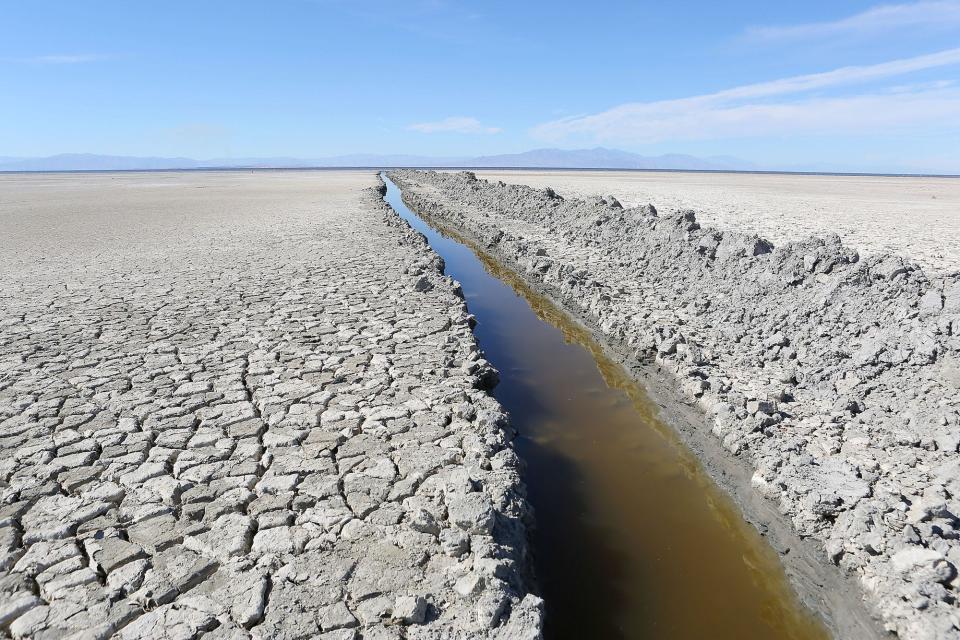
All politics is local: 'He's not the only smart one in the room'
“Brooks Hamby is smart and he knows it, but he needs to learn he’s not the only smart one in the room.” So says former Imperial County Supervisor Wally Leimgruber, who said this spring he’d been asked by some farmers and valley officials to run against Hamby for his IID board seat next year.
Leimgruber, who like others here remembers Hamby as a boy, still calls him by his childhood name of Brooks, eschewing JB. He’s 70, and ultimately decided not to run against Hamby. But when IID division lines were redrawn and they ended up both residing in Division 2, he said folks who are unhappy with some of Hamby’s actions approached him.
Asked for examples, he points to the same failed project to refill Red Hill Bay on the Salton Sea’s southern end that irked Peterson. But it’s not just the Monty Python reference that bothers him. He said Hamby unfairly led the charge against then Imperial County air pollution control officer Matt Dessert, who has since left his job, and prevented IID from sticking to a decade-long partnership with federal wildlife officials to provide water to refill the bay.
Hamby said he inherited the long-delayed project and wanted to bring it to a successful solution that protects public health. He noted it was Dessert who cited IID for pollution violations, and said the board had to defend itself.
Others were thrilled when Hamby became California’s Colorado River Commissioner, and say he listens and is willing to change course if it seems necessary or right.
“He was younger than me in school, but I think he's doing amazing things,” said Andrew Leimgruber, a nephew of Wally and a third-generation farmer, in an interview this spring. “I’m just worried about what he wants to do next and if we’re going to lose him … head Reclamation? Run for Congress? Who knows?”
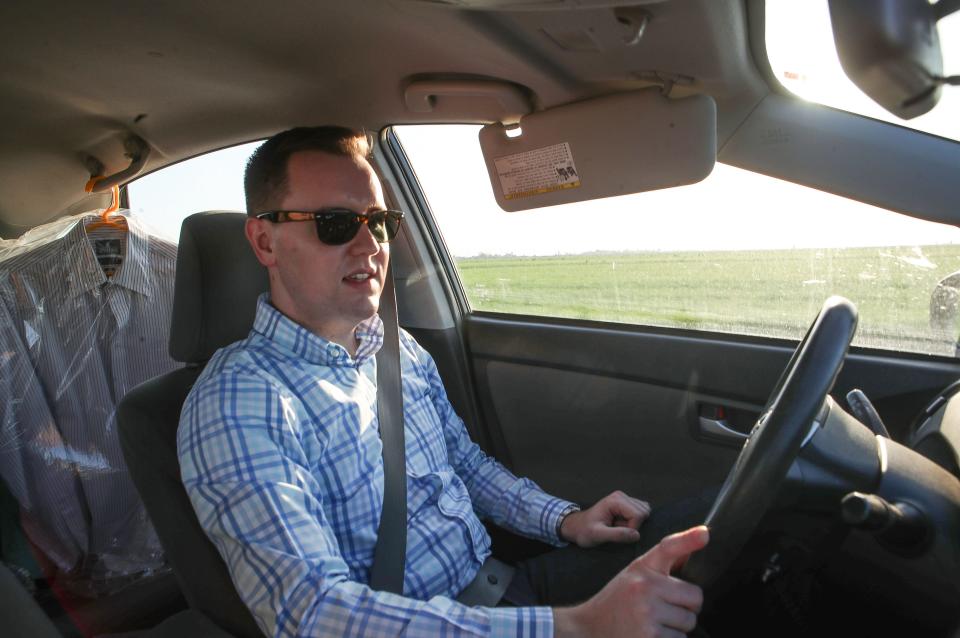
Hamby, who is registered to vote with no party preference, says he prefers tackling issues to partisan politics.
Still, he's won the endorsement of U.S. Rep. Raul Ruiz, D-Coachella, for re-election. “I’ve represented our area in Congress for more than a decade, and in that time I’ve learned the difference between hollow political figures and hard-working public servants who are willing to do what it takes to improve people’s lives," Ruiz said. "JB Hamby is exactly the type of dedicated champion the people need and deserve. "
Hamby has had other successes in his tenure, including brokering a solution with irate Riverside County cities who use IID electricity while denying them a seat or seats on the IID board.
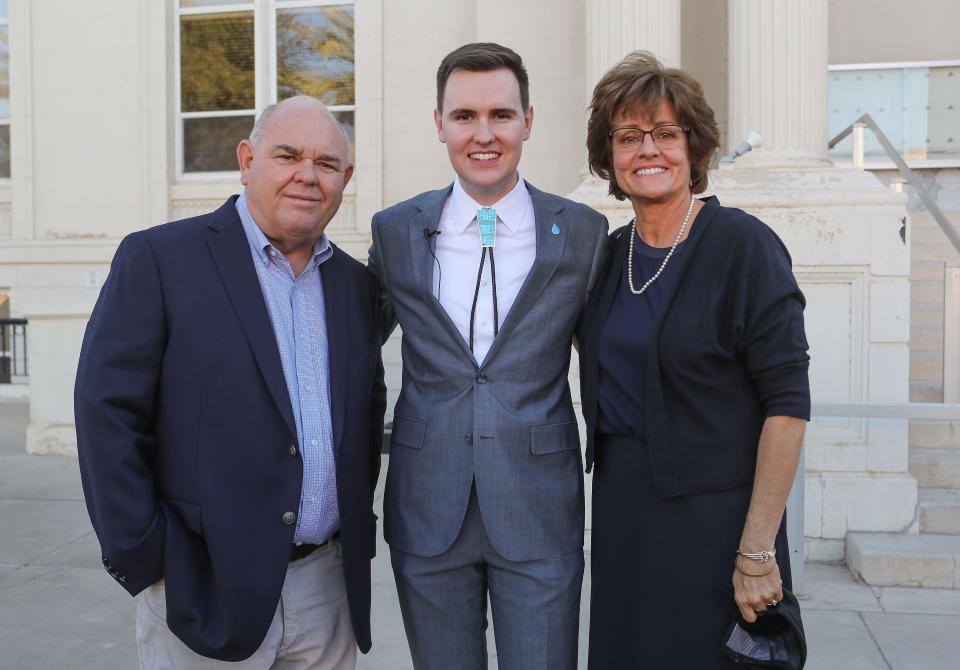
He knows that to remain California’s commissioner, he needs to satisfy voters back home and hang onto his IID board seat. One late May day, he juggled a request from a Little League team to have night lights turned on at a local outdoor field with talks with senior staffers for U.S. Rep. Kevin McCarthy, R-Bakersfield, and Sen. Mark Kelly, D-Arizona. The Colorado River Commission post pays nothing, despite the long hours. He says his work for his family's business augments his $47,000 IID salary. And his substantial travel and other expenses are covered.
At a personal level, he's succeeded in his mission, though not without loss. When his grandmother Fanny Hamby, whom he loved dearly, died in 2022, his father told his grieving son, "she was so proud of you."
Janet Wilson is senior environment reporter for The Desert Sun and a Stanford Lane Center Western Media Fellow. She can be reached at jwilson@gannett.com
This article originally appeared on Palm Springs Desert Sun: Colorado River rescue plan spurred by JB Hamby of Imperial Irrigation District

